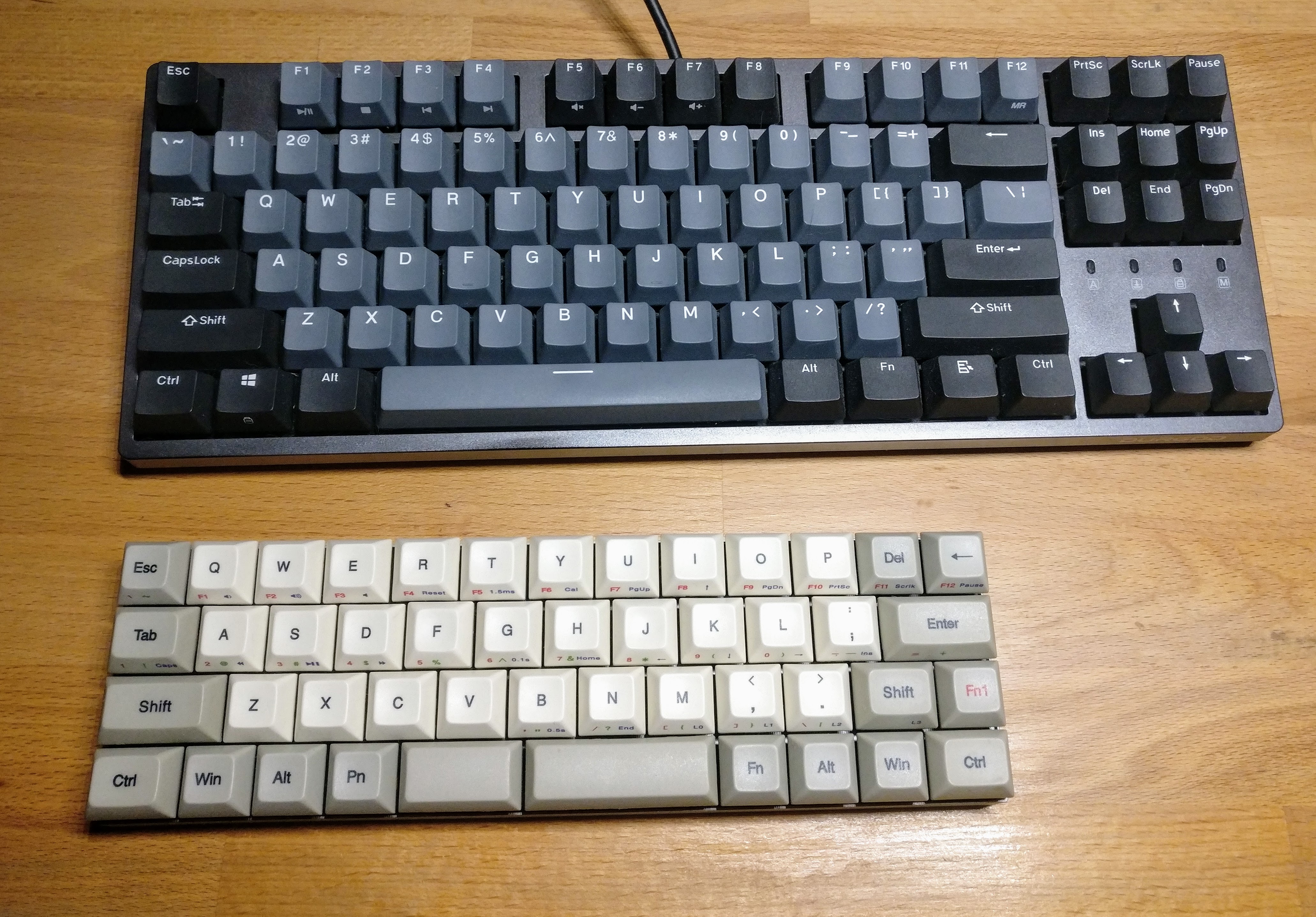Vortex Core Keyboard Review

I’ve had my eye on the Vortex Core keyboard for a few months now, and this past week I finally broke down and bought one (with Cherry MX Brown switches). The Vortex Core is a 40% keyboard, which means it consists primarily of letter keys, a few lonely bits of punctuation, and several modifier keys to activate different layers on the keyboard.
Physical impressions#
It’s a really cute keyboard. I’m a big fan of MX brown switches, and this keyboard is really a joy to type on, at least when you’re working primarily with the alpha keys. I’m still figuring out where some of the punctuation is, and with a few exceptions I haven’t yet spent time trying to remap things into more convenient positions.
The keyboard feels solid. I’m a little suspicious of the micro-usb connector; it feels a little wobbly. I wish that it was USB-C and I wish it felt a little more stable.
Here’s a picture of my Core next to my Durgod K320:

Programming#
The keyboard first came out in 2017, and if you read reviews that came out around that time you’ll find several complaints around limitations in the keyboard’s programming features, in particular:
- you can’t map the left and right spacebars differently
- you can’t remap layer 0
- you can’t remap the Fn1 key
And so forth. Fortunately, at some point (maybe 2018) Vortexgear released updated firmware that resolves all of the above issues, and introduces a completely new way of programming the keyboard.
Originally, the keyboard was programmed entirely via the keyboard itself: there was a key combination to activate programming mode in each of the three programmable layers, and this allowed you to freely remap keys. Unfortunately, this made it well difficult to share layouts, and made extensive remapping rather unwieldy.
The updated firmware ("CORE_MPC") does away with the hardware
programming, and instead introduces both a web UI for generating keyboard
layouts and a simple mechanism for pushing those layouts to the keyboard that
is completely operating system independent (which is nice if you’re a Linux
user and are tired of having to spin up a Windows VM just to run someone’s
firmware programming tool). With the new firmware, you hold down Fn-d when
booting the keyboard and it will present a FAT-format volume to the operating
system. Drag your layout to the volume, unmount it, and reboot the keyboard and
you’re all set (note that you will still need to spin up that Windows VM
one last time in order to install the firmware update).
The Vortexgear keyboard configurator is available at http://www.vortexgear.tw/mpc/index.html, but you’re going to want to use https://tsfreddie.github.io/much-programming-core/ instead, which removes several limitations that are present in the official tool.
Because the new configurator (a) allows you to remap all layers, including
layer 0, and (b) allows to create mappings for the Pn key, you have a lot
of flexibility in how you set up your mappings.
How I’ve configured things#
I performed some limited remapping of layer 0:
I’ve moved the
Fn1key to the right space bar, and turned the originalFn1key into the quote key. I use that enough in general writing that it’s convenient to be able to access it without using a modifier.I’ve set up a cursor cluster using the
Pnkey. This gets me the standardWASDkeys for arrows, andQandEfor page up and page down.Holding down the
Pnkey also gets me a numeric keypad on the right side of the keyboard.
Final thoughts#
It’s a fun keyboard. I’m not sure it’s going to become my primary keyboard, especially for writing code, but I’m definitely happy with it.